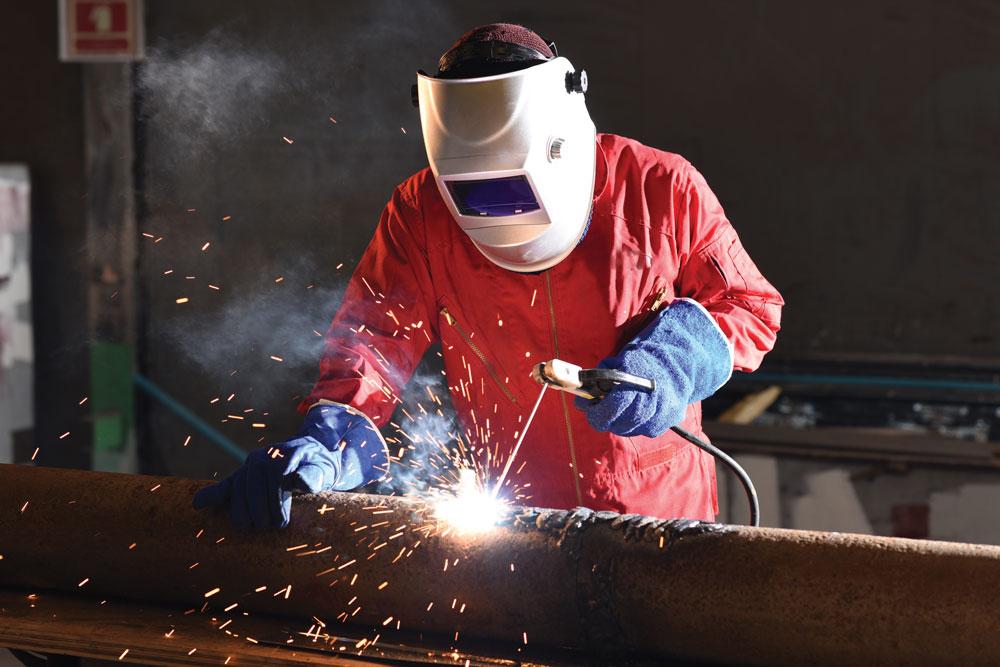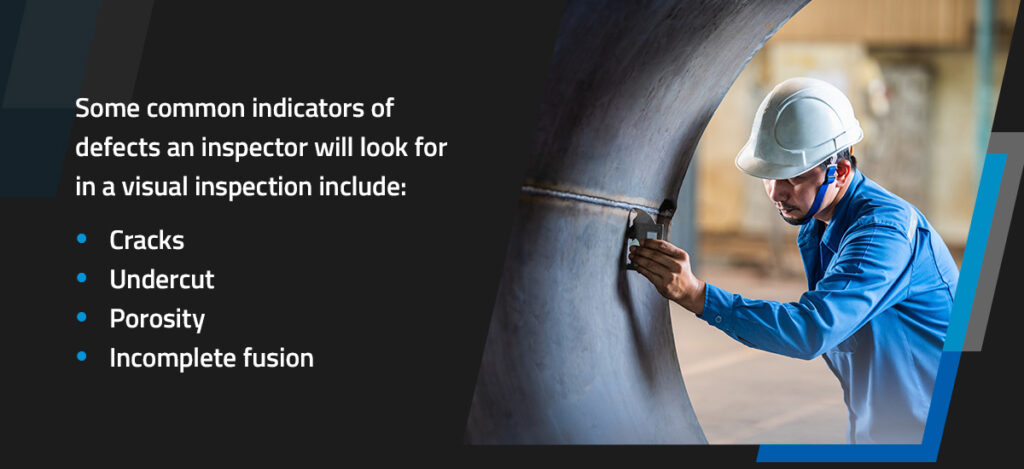Necessary Tips for Effective Welding Inspection Racine Services
Necessary Tips for Effective Welding Inspection Racine Services
Blog Article
Ingenious Approaches to Fillet Weld Evaluation and Screening: Enhancing Weld High Quality and Conformity Standards
In the realm of welding, the top quality and honesty of fillet welds play an important duty in making certain the structural soundness and reliability of different commercial components. With the consistent drive for boosted effectiveness and conformity with rigorous criteria, the exploration of cutting-edge approaches to fillet weld examination and screening has become essential. As sectors evolve, the typical approaches might no more suffice in fulfilling the demands of modern welding applications. By accepting cutting-edge innovations and techniques, a brand-new perspective of possibilities arises in the world of weld top quality evaluation and adherence to conformity standards.
Advanced Non-Destructive Screening Approaches
Making use of modern technologies, advanced non-destructive testing techniques play a vital duty in guaranteeing the integrity and high quality of fillet welds. These techniques, such as phased variety ultrasonic testing (PAUT) and magnetic particle testing (MPT), offer comprehensive insights into the weld's internal framework without causing any type of damage to the product. PAUT, for example, uses multiple ultrasonic components to check the weld from different angles, providing an extensive visualization of prospective problems like absence of blend or cracks.
By using these advanced non-destructive testing techniques, weld assessors can precisely analyze the quality of fillet welds, making sure compliance with sector criteria and guidelines. The ability to discover flaws early on not only enhances weld quality but additionally avoids costly rework or failures in architectural stability, highlighting the significance of these cutting-edge testing approaches in welding examinations.
Robotics and Automation in Assessment
The combination of robotics and automation has actually transformed the examination procedure for fillet welds, improving performance and precision in quality analysis. Robotics supply accurate control and repeatability in examining welds, ensuring regular and trustworthy results. Automated systems can be set to comply with particular evaluation paths, guaranteeing comprehensive protection of welds and reducing the risk of human mistake.
Robot examination systems equipped with sophisticated sensors can identify and determine weld features with high precision, supplying thorough data for evaluation. These systems can recognize defects such as splits, absence of fusion, and porosity, allowing timely corrective activities to be taken. In addition, robotics and automation enable real-time information collection and evaluation, giving immediate responses to operators and facilitating quick decision-making procedures.
Moreover, making use of robotics and automation in fillet weld assessment boosts general productivity by lowering examination times and raising evaluation throughput. By streamlining the assessment procedure, makers can make certain weld high quality and conformity standards are satisfied effectively, ultimately bring about cost financial savings and boosted item quality.
Using Artificial Intelligence for Analysis
Fabricated intelligence plays a critical role in boosting the effectiveness and precision of evaluation in fillet weld evaluation procedures. AI formulas can rapidly process large quantities of data from weld evaluations, detecting flaws or incongruities that might be challenging to recognize with the naked eye - Welding Inspection Racine.
Furthermore, AI systems can discover from previous examination information, continuously improving their capacity to determine potential problems and inconsistencies in fillet welds. This adaptive knowing capability improves the general quality control process, minimizing the probability of human error and guaranteeing that welds satisfy the required standards. By integrating synthetic knowledge right into fillet weld evaluation, sectors can attain higher degrees of effectiveness, uniformity, and conformity in hop over to here their assessment practices.
Portable Tools for On-Site Examination
 Enhancing field assessment efficiency, the fostering of mobile tools transforms on-site analysis processes for fillet welds. These tools offer versatility and convenience, allowing assessors to carry out detailed assessments in various areas, consisting of remote or challenging environments. Portable devices such as ultrasonic screening tools, magnetic particle examination devices, and electronic radiography systems offer real-time information and high-resolution imaging abilities, making it possible for fast decision-making and instant responses on weld top quality.
Enhancing field assessment efficiency, the fostering of mobile tools transforms on-site analysis processes for fillet welds. These tools offer versatility and convenience, allowing assessors to carry out detailed assessments in various areas, consisting of remote or challenging environments. Portable devices such as ultrasonic screening tools, magnetic particle examination devices, and electronic radiography systems offer real-time information and high-resolution imaging abilities, making it possible for fast decision-making and instant responses on weld top quality.One significant advantage of portable tools is their capability to enhance assessment procedures, lowering downtime and boosting overall efficiency. Inspectors can quickly carry these devices to various work sites, eliminating the need for carrying hefty equipment or components to off-site facilities. Additionally, the portability of these devices advertises cost-effectiveness by reducing transportation expenditures and speeding up evaluation timelines.
Moreover, making use of portable tools for on-site evaluation promotes aggressive quality assurance actions, as inspectors can without delay identify and address any prospective welding issues or discrepancies. By incorporating these innovative innovations into on-site inspection methods, welding specialists can make sure compliance with sector requirements and boost weld high quality, inevitably causing boosted structural honesty and safety in numerous welding applications.
Assimilation of Data Monitoring Solution
Having actually maximized on-site evaluation procedures through the utilization of portable devices, the next stage includes the smooth integration of information administration systems to even more boost performance and information analysis capacities in fillet weld evaluation and testing. Welding Inspection Racine. By incorporating information management systems into the inspection procedure, companies can improve data collection, storage, and analysis. This combination allows for real-time monitoring of weld high quality, prompt recognition of flaws, and prompt decision-making to fix any kind of problems that may emerge throughout the inspection process
Data monitoring systems play a critical duty in streamlining examination information, facilitating very easy gain access to for authorized employees, and ensuring data honesty and protection. Through the combination of these systems, assessors can produce extensive reports, track historic data for trend analysis, and enhance total process performance. The combination of information monitoring systems makes it possible for seamless interaction between different stakeholders included in the evaluation process, promoting cooperation and browse around this site boosting general top quality control steps. Eventually, the assimilation of data monitoring systems serves to boost the criteria of fillet weld inspection and screening, ensuring compliance with market guidelines and improving weld high quality.
Conclusion
To conclude, cutting-edge methods to fillet weld inspection and testing have actually significantly enhanced weld quality and compliance criteria. Advanced non-destructive testing approaches, robotics, automation, fabricated knowledge, portable tools, and information administration systems have changed the way weld assessments are performed. By using these technologies, markets can guarantee that welds fulfill the called Read More Here for high quality standards and laws, inevitably enhancing total efficiency and safety in welding processes.

By utilizing these innovative non-destructive testing strategies, weld assessors can accurately assess the quality of fillet welds, ensuring compliance with industry criteria and policies. Mobile devices such as ultrasonic screening devices, magnetic particle evaluation equipment, and electronic radiography systems supply real-time data and high-resolution imaging capabilities, making it possible for fast decision-making and immediate feedback on weld quality.
Having actually enhanced on-site evaluation procedures through the application of portable tools, the following stage includes the seamless combination of data management systems to better improve efficiency and data evaluation capacities in fillet weld evaluation and screening (Welding Inspection Racine). Inevitably, the combination of data monitoring systems serves to boost the requirements of fillet weld evaluation and testing, making sure compliance with market policies and improving weld high quality
 In conclusion, cutting-edge methods to fillet weld assessment and screening have actually considerably improved weld quality and conformity criteria.
In conclusion, cutting-edge methods to fillet weld assessment and screening have actually considerably improved weld quality and conformity criteria.Report this page